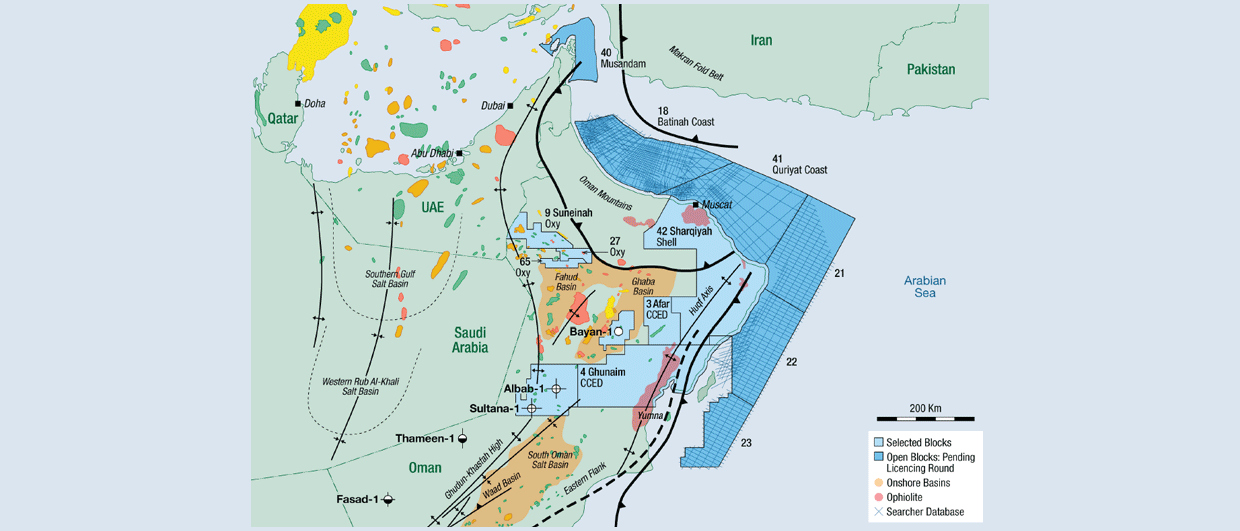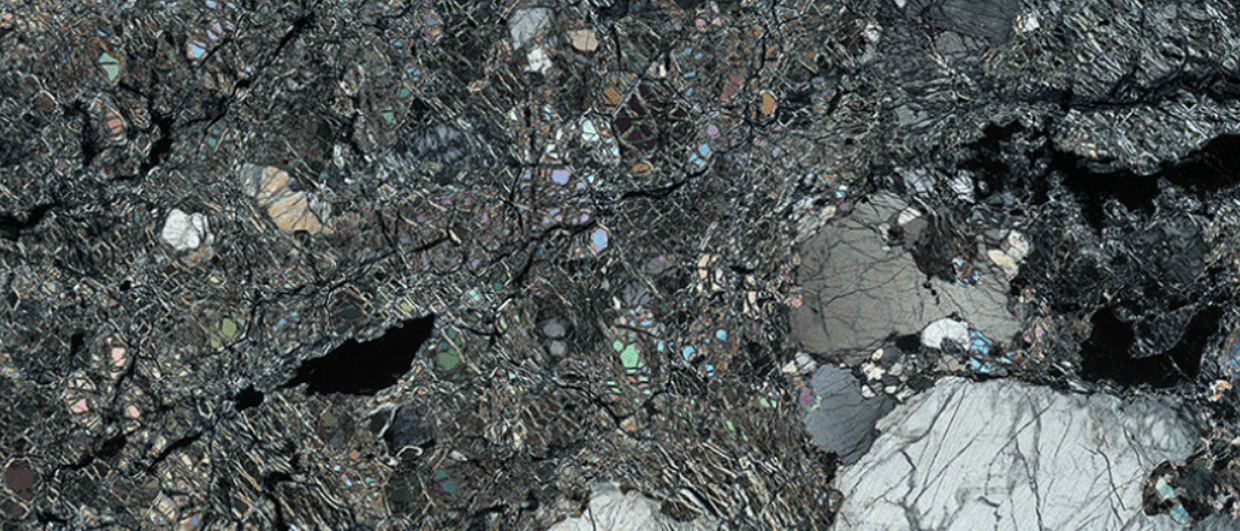Much has been written, including in this magazine, about the fantastic outcrop geology of Oman, the wonderful exposure, the preservation of salt at surface in the arid climate, and the incredible geological laboratory this provides. But what about the subsurface? How has the geology determined prospectivity and what are hydrocarbon and energy transition explorers up to in the various basins of the diverse country?
Oman is a mature hydrocarbon province with its first discovery taking place in 1959 (Fasad-1, Cities Service, oil shows), quickly followed by declaration of commerciality of the Fahud Field in 1964, which came onstream in 1967. While parts of the country appear geographically very remote there is significant established oil and gas infrastructure which enables some new exploration to be classed as ILX.
Geology
Oman’s geological lifespan is very long. Being part of the Arabian Platform it displays a stratigraphy from the Proterozoic through to the Tertiary, being essentially tectonically quiescent through many of these millions of years. This enables the world class oil-prone Neoproterozoic/ infra-Cambrian source rock (Huqf Supergroup) to be preserved and effective. The source rock owes its richness to the completely different atmospheric conditions persisting in the “snowball Earth” of 650-590 million years ago.
The presence of salt, with its thermally insulating properties, means that the source rock is seldomly overmature and is in the oil generation window at the present day. Infra-Cambrian intra-formational stringer carbonates, such as those being targeted for production in blocks 3 and 4, provide an effective reservoir and short migration route. The Late Cretaceous closure of Tethys and the obduction of the Semail ophiolite in the east of Oman, extending into the eastern emirates of UAE (where it is being explored for hydrogen), mobilised the salt, creating traps and migration pathways both in and beyond the salt basin areas.

Recent exploration and development
Overlying reservoirs however can be somewhat challenging, as the Palaeozoic reservoirs have typically lost porosity and permeability, leading to production challenges. For instance, Tethys Oil discovered a 40 m hydrocarbon column in the Ordovician Hasirah Fm at Thameen-1 in 2020. However, moveable hydrocarbons were not proven and the well is to be re-entered in mid-2024 for further testing.
Occidental, operator of producing fields in northern Oman Blocks 9, 27 and 65, has conducted a vigorous E&P campaign in recent years and has been able to place at least 16 successful exploration wells, some drilled as horizontals or multi-laterals, on immediate production. The company claims this is achieved by using innovative technology and a process named “Oxy-jetting” to add incremental production (Oxy Q2 2023 report).
The Cretaceous carbonate Shu’aiba Formation reservoir accounts for much of the onshore oil production. Offshore, Cretaceous reservoirs have proved productive in the Masirah Graben, where Masirah Oil has established oil production from the Aruma Group sands at the Yumna Field. Nearby exploration, including in deepwater, by Eni, has not yet yielded any positive announcements. The presence of overthrusted ophiolitic material may complicate imaging and reservoir quality.
Current activities
The diversity of Oman’s geological features is matched by a wide range of active companies, from NOCs such as PDO, CCED, OQ, to international independents including Tethys Oil and Hydrocarbon Finders. The country also continues to attract and retain supermajors including bp, Shell, Total Energies as well as the previously mentioned Occidental and Eni. While there are no reports from TotalEnergies’ recent two well campaign onshore Block 12, Albab-1 and Sultana-1, Shell is due to drill on Block 42 in 2024 and Eni / bp recently suspended Bayan-1 in Block 77.
A bid round is expected to be announced in 2024 with up to six offshore blocks available. Recently reprocessed seismic data by Searcher (32,000 km of 2D and 2,500 km2 of 3D seismic) will be a valuable derisking tool for companies anxious to explore these frontiers.





